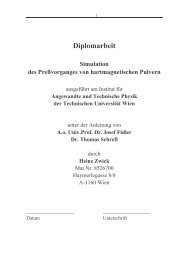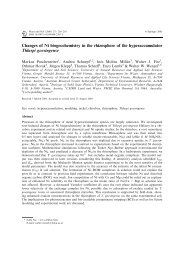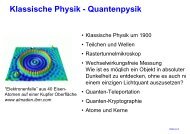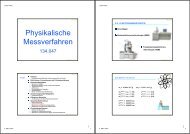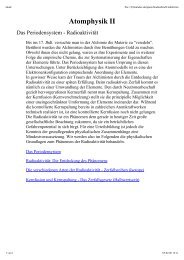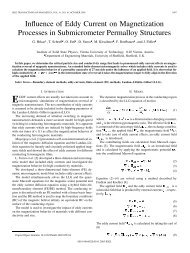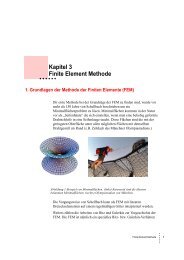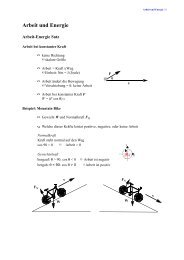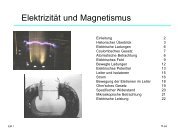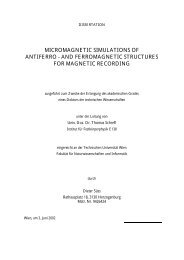Read Back Signals in Magnetic Recording - Research Group Fidler
Read Back Signals in Magnetic Recording - Research Group Fidler
Read Back Signals in Magnetic Recording - Research Group Fidler
Create successful ePaper yourself
Turn your PDF publications into a flip-book with our unique Google optimized e-Paper software.
Basics<br />
Figure 2.4: Schematic model of a sp<strong>in</strong>-valve GMR head (CIP mode) with exchange-p<strong>in</strong>ned<br />
layer and longitud<strong>in</strong>al hard bias [19].<br />
The change <strong>in</strong> resistance of the GMR effect can be mathematically approximated by<br />
follow<strong>in</strong>g formula:<br />
( θ θ )<br />
⎛ 1−cos 1− 2 ⎞<br />
ρ = ρ0⎜1+ RGMR<br />
⋅<br />
⎟<br />
⎝ 2 ⎠<br />
(2.51)<br />
Figure 2.5 shows the dependence of the resistivity as function of the angle between the<br />
magnetization orientations of the two ferromagnetic layers. To achieve highest sensitivity, the<br />
work<strong>in</strong>g po<strong>in</strong>t of the GMR sp<strong>in</strong> valve should be chosen at maximum slope. If there is no<br />
external field, the magnetization of the free layer should be ideally perpendicular to the<br />
p<strong>in</strong>ned layer magnetization. To adjust the magnetization of the free layer, hard bias magnets<br />
are used as shown <strong>in</strong> Figure 2.4.<br />
Figure 2.5: Change <strong>in</strong> resistance of a sp<strong>in</strong> valve compared to AMR (NiFe) vs.<br />
magnetization orientation [19].<br />
23



